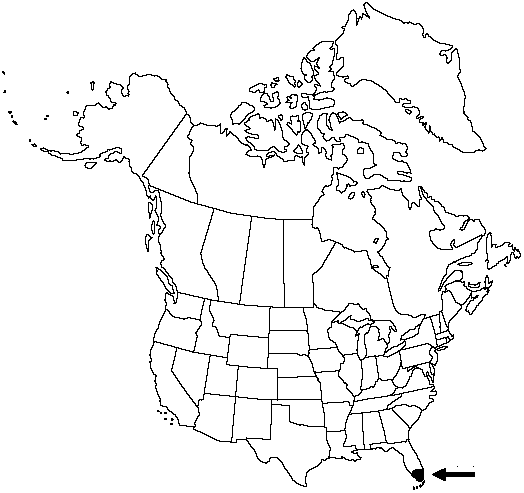Difference between revisions of "Neurodium lanceolatum"
3: 28. 1852.
FNA>Volume Importer |
FNA>Volume Importer |
||
| Line 19: | Line 19: | ||
}}<!-- | }}<!-- | ||
| − | --><span class="statement" id="st- | + | --><span class="statement" id="st-undefined" data-properties=""><b>Roots </b>brown, in dense mass often covering stems. <b>Stem</b> scales black to dark brown, triangular-acuminate to lanceolate-acuminate, clathrate, papillate-ciliolate. <b>Leaves</b> erect-arching, 1–4.5 dm. <b>Petiole</b> less than 3.5 cm. <b>Blade</b> 20 × 1.3 cm, leathery; base narrowly cuneate to attenuate; apex acute to rounded. <b>Sori</b> to 6 cm, ending ca. 0.5 cm below apex of blade. <b>2n</b> = 74.</span><!-- |
-->{{Treatment/Body | -->{{Treatment/Body | ||
| Line 47: | Line 47: | ||
|publication year=1852 | |publication year=1852 | ||
|special status= | |special status= | ||
| − | |source xml=https://jpend@bitbucket.org/aafc-mbb/fna- | + | |source xml=https://jpend@bitbucket.org/aafc-mbb/fna-data-curation.git/src/9216fc802291cd3df363fd52122300479582ede7/coarse_grained_fna_xml/V2/V2_689.xml |
|genus=Neurodium | |genus=Neurodium | ||
|species=Neurodium lanceolatum | |species=Neurodium lanceolatum | ||
| − | |||
| − | |||
| − | |||
| − | |||
| − | |||
| − | |||
| − | |||
| − | |||
| − | |||
| − | |||
| − | |||
| − | |||
| − | |||
| − | |||
| − | |||
| − | |||
}}<!-- | }}<!-- | ||
-->[[Category:Treatment]][[Category:Neurodium]] | -->[[Category:Treatment]][[Category:Neurodium]] | ||
Revision as of 13:26, 27 July 2019
Roots brown, in dense mass often covering stems. Stem scales black to dark brown, triangular-acuminate to lanceolate-acuminate, clathrate, papillate-ciliolate. Leaves erect-arching, 1–4.5 dm. Petiole less than 3.5 cm. Blade 20 × 1.3 cm, leathery; base narrowly cuneate to attenuate; apex acute to rounded. Sori to 6 cm, ending ca. 0.5 cm below apex of blade. 2n = 74.
Habitat: Epiphytic in hammocks and mangrove swamps, substrate subacidic to circumneutral
Elevation: 0 m
Distribution

Fla., Mexico, West Indies, Central America.
Discussion
Selected References
None.
Lower Taxa
None.
